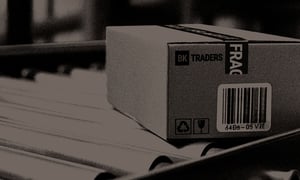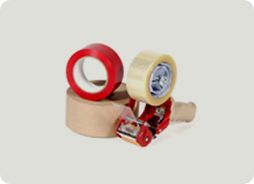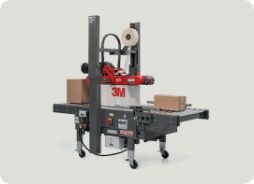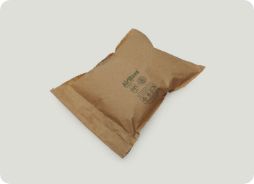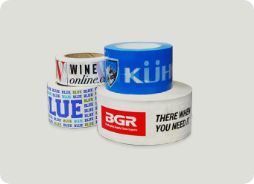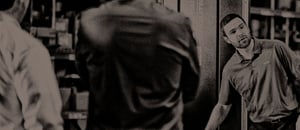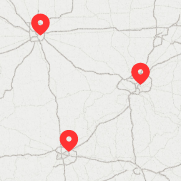BOOST PACKING LINE THROUGHPUT WITH AUTOMATED BAGGING

An auto-bagger streamlines your packaging process, saves you money on labor, and contributes to a more sustainable operation.
WHY IT MATTERS
A slow packing line hinders production output, and bagging is oftentimes a key culprit. Manual bagging is time-consuming and can create a bottleneck in the production process that holds the rest of the operation up, preventing products from getting out the door on time.
- Automation speeds up the bagging process, increasing your throughput and helping you to scale up production to meet increasing demand.
- It optimizes staff workload: By automating repetitive tasks, workers can focus on higher-value activities, which enhances overall productivity and job satisfaction.
- It right-sizes your bags, leading to cost savings and improved sustainability.
INCREASE PRODUCTION BY ELIMINATING PACKING LINE BOTTLENECKS
Auto-baggers maximize your throughput: They work by quickly and accurately sealing products in bags, saving significant time compared to manual bagging. The machine automatically applies shipping labels, further speeding production.
By increasing packing line throughput, you can ensure the production team is keeping up with sales. This is especially helpful if you see seasonal spikes in production.

SEE HOW IT WORKED FOR A BGR CUSTOMER:
The problem: A Work Uniforms Manufacturer could only manually bag 1-2 items per minute. This created a significant bottleneck in their operation that hindered their ability to hit production quotas.
By implementing an auto-bagger, they:
-
Increased their packing line throughput over 6X. Thanks to a more efficient bagging operation, they can now pack 10 bags per minute.
- Eliminated a bottleneck: Bagging is no longer the weak link in their production process.
SAVE MONEY BY OPTIMIZING LABOR
Allocate employees to more important tasks: One of the main advantages of automated packaging equipment is labor that used to go to tedious packaging tasks can now be shifted to higher priority tasks.
Scale up production without adding labor: Manual bagging processes limit your ability to scale up production. As demand increases, the need for more labor intensifies. Hiring and training additional workers takes time and resources, and the physical strain of repetitive tasks can result in higher turnover and absenteeism. Auto-baggers, however, easily accommodate increased volumes without additional strain, allowing you to scale up production easily.
SEE HOW IT WORKED FOR A BGR CUSTOMER:
The problem: The same Work Uniforms Manufacturer dedicated significant labor to bagging, and they were unable to scale up their production without hiring even more.
By implementing an auto-bagger, they:
-
Reallocated 4 employees that had previously spent a majority of their time hand-bagging to more valuable roles.
-
Saw $280k in annual savings, due in large part to this labor reallocation.
-
Can now scale their production another 30% without hiring extra staff for the packing line.

IMPROVE SUSTAINABILITY AND SAVE MONEY BY REDUCING PACKAGING WASTE
Auto-baggers play a role in not just a more efficient packing line, but also a more sustainable one. In a manual packing line, human bag selection often leads to oversized bags.
Auto-baggers provide a more sustainable, cost-effective approach. They use advanced sensors and programming to measure and cut bags to the exact size needed for each product. This benefits your operation 3 ways:
-
Meets sustainability goals: By using the right sized bags for each product, you reduce plastic waste.
-
Save on packaging materials: By replacing oversized bags with right-sized ones, you save on material costs.
-
Reduces shipping costs: Using the right-sized bag reduces DIM weight charges.

SEE HOW IT WORKED FOR A BGR CUSTOMER:
The problem: A Home Goods Manufacturer faced significant waste issues from oversized bags. This was in conflict with their sustainability initiatives to reduce plastic packaging.
By implementing an auto-bagger, they:
- Reduced plastic waste by 15%, helping them achieve their sustainability target.
- Saved $120k annually, thanks to a 10X increase in throughput, labor savings, and savings on bag material.
THE BOTTOM LINE
Streamline your packaging process, cut labor costs, and achieve greener operations with automated bagging.
Manual bagging is a slow, labor-intensive task that can create a bottleneck in your production process, slowing down the entire operation. An auto-bagger machine solves this by improving throughput and reducing reliance on human labor. It allows you to scale up your production without worsening this bottleneck or adding labor costs. Additionally, an auto-bagger cuts bags to the exact size needed, helping you meet your sustainability goals and reduce your parcel shipping costs.





